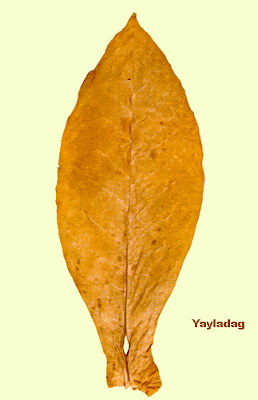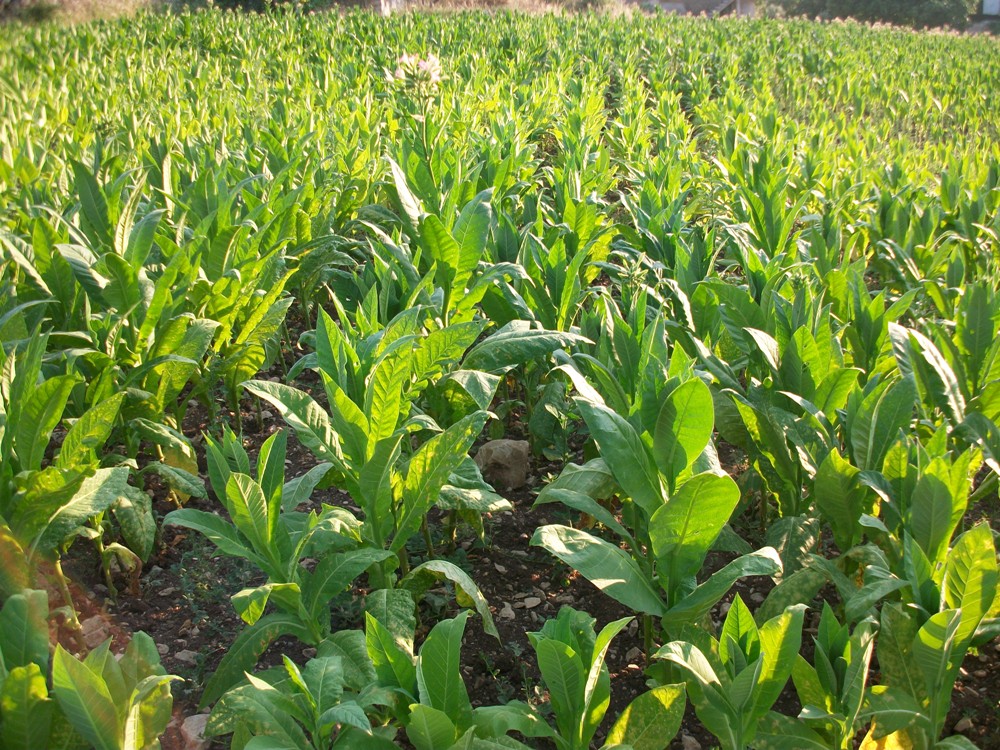Eastern Anatolia Region is located in the easternmost part of Turkey. It is bounded by Turkey's Central Anatolia Region on the west, its Black Sea Region on the north, its Southeast Anatolia Region and Iraq on the south, and with Iran, Azerbaijan, Armenia and Georgia on the east.

Southeastern Anatolia Region is bordered by the Mediterranean Region to the west, the Eastern Anatolia Region to the north, Syria to the south, and Iraq to the southeast.

This region (the combination of the two regions) is the second largest tobacco growing area in Turkey. Tobacco growing areas of Eastern Anatolia are mostly highland areas and climate is very harsh with longer winters.
Southeastern Anatolia is one of the Turkey’s most plain regions. In this region long summers are very hot and dry and winters are cold (not colder as Eastern Anatolia) and rainy.
Because of these different climate conditions, this region’s tobaccos have different characteristics than other three region’s (Aegean, Black Sea and Marmara).
First, there are a lot of strains some of them are small leaved with wide auricles and others are large leaved and narrow-auricled.
Ox-tongue (sığırdili) and similar leaf shapes are very common among these strains. This populations are very different (both physical and blending features) than other three region’s tobaccos. Such that some of them resemble Virginia tobaccos with their smoking and flavor cahracterictics, but growing and curing techniques are very different than American tobaccos. With a few exceptions, these are mostly semi-oriental strains.
According to their quality and blending features, most important strains are explained below.
Bitlis
Bitlis strain of tobaccos is growing in Bitlis growing area which is not far away from Lake Van, Muş and Şemdinli. Due to the mountainous topography, tobacco growing areas are quite limited.
Bitlis tobacco is medium-sized, wide-auricled and wide-eliptic shaped. Color of this tobaccos are generally straw-colored and bright, sometimes there are also bright red colors. Texture of Bitlis is thickish with a good elasticity.
Smoke of Bitlis is sweet and full flavored (stronger) and has a pleasing smell (it resembles new-mown grass smell).
This strain is added to blends to provide sweetness, flavor and a good color. It has an 25% reducing sugars which is the highest amount among the Turkish tobaccos. In point of smoking characteristic, Bitlis strains gives different smoking pleasure. Bitlis is one of the rare strain which provides a good smoking pleasure without blending.
Bitlis is suitable for all cigarette blend types, also it’s very favorable for pipe blends
Nicotine content of Bitlis tobacco is generally about 1.2 %.
Şemdinli and Muş sub-strains also have medium-sized leaves, wide auricled kabakulak leaves. These tobaccos ribs/veins are finer than Bitlis. Also with a unique flavor and nicotine content (1.5 to 2 %) they’re very satisfying.


Adıyaman
Leaves of this strain are medium and partly large-sized. Leaves are petiolated with wide auricles. This strain’s color is mostly yellow partly vary from light red to red. Especially yaka and yarı yaka grown tobaccos look very bright.
The texture of Adıyaman strain is moderetaly thick. While side ribs are fine mid-rib is wide and prominent.
Strain’s burning capability and hygroscopicity is high.
Smoking caharcteristics of Adıyaman is strong and sweet. This strain has a specific (resembles Virginia) pleasing smell.
Adıyaman is generally used in blends to bring them strongness, sweetness and flavor (smell).
(In my opinion blend of Adıyaman-Bitlis is quite satisfying and tasty)
Adıyaman tobaccos can be used in all blend types because of their excellent harmony. It’s still used in pipe blends in large quantities.
Nicotine content of Adıyaman is about 1.7 to 2.0 %. Total reducing sugar contant is 15 %. Nitrogen content (from proteins) of this strain is only 1 % which is the lowest amount among the Turkish tobaccos. This low nitrogen content gives Adıyaman a smooth smoke.
The most exclusive Adıyaman tobaccos are grown in Çelikhan (a district of Adıyaman). Because of this, Adıyaman tobaccos are generally called only “Çelikhan”.


Yayladağ
Yayladağ leaves are mostly medium sized, wide aurickled and bellied. This strain contains high amounts of resins. Their texture is medium thick. While midribs (primary) are wide side ribs (secondary) are finer. Leaf colors are yellow, light red and red.
These tobaccos’ taste is sweet and strong.
This strain is very favorable for cigarette and pipe blends. In “Yayladağ Pipo Tütünü” (Yayladağ Pipe Tobacco) – a commercial pipe tobacco brand – it’s used in a rate of over 50 %. It’s also favorable for chewing tobaccos.
Flavor of this tobacco is spicy.
Nicotine content of Yayladağ is around 1 %, reducing sugars are 15 % and nitrogen content is 1.2 %.


İskenderun
This strain’s growing areas are Mediterranean coasts of Iskenderun province.
İskenderun’s leaves are medium sized and hearth shaped (cordate) as Bursa but their texture is thicker and color is red and dark red.
These tobaccos have a tasty, satisfying and sweet smoke.
Because of the higher nicotine content (2 %), it’s stronger than Yayladağ.
Mardin
The amount of production of this strain is lower. Mardin has ox-tongue (sığırdili) shaped leaves. Texture of the leaves are quite thick. Leaf colors vary from light yellow to light red.
Mardin has a very strong smoke but it’s smell is very pleasant.
These tobaccos are favorable for cigar blends as well as cigarette blends.
Silvan
Laves of Silvan is medium to large sized. Form of the leaf is wide and oval. Leaf colors vary from yellow-red, light red to red. These tobaccos’ smoke is quite strong and sweet. It’s generally used in cigarette blends to give them strongness.

Southeastern Anatolia Region is bordered by the Mediterranean Region to the west, the Eastern Anatolia Region to the north, Syria to the south, and Iraq to the southeast.

This region (the combination of the two regions) is the second largest tobacco growing area in Turkey. Tobacco growing areas of Eastern Anatolia are mostly highland areas and climate is very harsh with longer winters.
Southeastern Anatolia is one of the Turkey’s most plain regions. In this region long summers are very hot and dry and winters are cold (not colder as Eastern Anatolia) and rainy.
Because of these different climate conditions, this region’s tobaccos have different characteristics than other three region’s (Aegean, Black Sea and Marmara).
First, there are a lot of strains some of them are small leaved with wide auricles and others are large leaved and narrow-auricled.
Ox-tongue (sığırdili) and similar leaf shapes are very common among these strains. This populations are very different (both physical and blending features) than other three region’s tobaccos. Such that some of them resemble Virginia tobaccos with their smoking and flavor cahracterictics, but growing and curing techniques are very different than American tobaccos. With a few exceptions, these are mostly semi-oriental strains.
According to their quality and blending features, most important strains are explained below.
Bitlis
Bitlis strain of tobaccos is growing in Bitlis growing area which is not far away from Lake Van, Muş and Şemdinli. Due to the mountainous topography, tobacco growing areas are quite limited.
Bitlis tobacco is medium-sized, wide-auricled and wide-eliptic shaped. Color of this tobaccos are generally straw-colored and bright, sometimes there are also bright red colors. Texture of Bitlis is thickish with a good elasticity.
Smoke of Bitlis is sweet and full flavored (stronger) and has a pleasing smell (it resembles new-mown grass smell).
This strain is added to blends to provide sweetness, flavor and a good color. It has an 25% reducing sugars which is the highest amount among the Turkish tobaccos. In point of smoking characteristic, Bitlis strains gives different smoking pleasure. Bitlis is one of the rare strain which provides a good smoking pleasure without blending.
Bitlis is suitable for all cigarette blend types, also it’s very favorable for pipe blends
Nicotine content of Bitlis tobacco is generally about 1.2 %.
Şemdinli and Muş sub-strains also have medium-sized leaves, wide auricled kabakulak leaves. These tobaccos ribs/veins are finer than Bitlis. Also with a unique flavor and nicotine content (1.5 to 2 %) they’re very satisfying.

Adıyaman
Leaves of this strain are medium and partly large-sized. Leaves are petiolated with wide auricles. This strain’s color is mostly yellow partly vary from light red to red. Especially yaka and yarı yaka grown tobaccos look very bright.
The texture of Adıyaman strain is moderetaly thick. While side ribs are fine mid-rib is wide and prominent.
Strain’s burning capability and hygroscopicity is high.
Smoking caharcteristics of Adıyaman is strong and sweet. This strain has a specific (resembles Virginia) pleasing smell.
Adıyaman is generally used in blends to bring them strongness, sweetness and flavor (smell).
(In my opinion blend of Adıyaman-Bitlis is quite satisfying and tasty)
Adıyaman tobaccos can be used in all blend types because of their excellent harmony. It’s still used in pipe blends in large quantities.
Nicotine content of Adıyaman is about 1.7 to 2.0 %. Total reducing sugar contant is 15 %. Nitrogen content (from proteins) of this strain is only 1 % which is the lowest amount among the Turkish tobaccos. This low nitrogen content gives Adıyaman a smooth smoke.
The most exclusive Adıyaman tobaccos are grown in Çelikhan (a district of Adıyaman). Because of this, Adıyaman tobaccos are generally called only “Çelikhan”.


Yayladağ
Yayladağ leaves are mostly medium sized, wide aurickled and bellied. This strain contains high amounts of resins. Their texture is medium thick. While midribs (primary) are wide side ribs (secondary) are finer. Leaf colors are yellow, light red and red.
These tobaccos’ taste is sweet and strong.
This strain is very favorable for cigarette and pipe blends. In “Yayladağ Pipo Tütünü” (Yayladağ Pipe Tobacco) – a commercial pipe tobacco brand – it’s used in a rate of over 50 %. It’s also favorable for chewing tobaccos.
Flavor of this tobacco is spicy.
Nicotine content of Yayladağ is around 1 %, reducing sugars are 15 % and nitrogen content is 1.2 %.

İskenderun
This strain’s growing areas are Mediterranean coasts of Iskenderun province.
İskenderun’s leaves are medium sized and hearth shaped (cordate) as Bursa but their texture is thicker and color is red and dark red.
These tobaccos have a tasty, satisfying and sweet smoke.
Because of the higher nicotine content (2 %), it’s stronger than Yayladağ.
Mardin
The amount of production of this strain is lower. Mardin has ox-tongue (sığırdili) shaped leaves. Texture of the leaves are quite thick. Leaf colors vary from light yellow to light red.
Mardin has a very strong smoke but it’s smell is very pleasant.
These tobaccos are favorable for cigar blends as well as cigarette blends.
Silvan
Laves of Silvan is medium to large sized. Form of the leaf is wide and oval. Leaf colors vary from yellow-red, light red to red. These tobaccos’ smoke is quite strong and sweet. It’s generally used in cigarette blends to give them strongness.


